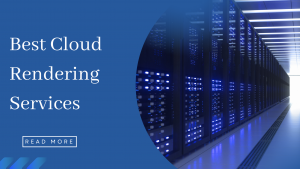Table of Contents
Economic Benefits of Cloud Computing
Cloud computing is the most rapidly expanding computer model available via the internet. It is commonly referred to as “the cloud,” and it alleviates the burden of spending big sums on on-premise infrastructure, storage, and software licensing. Companies don’t need to worry about physical space for servers or renovations because data may be kept off-site in the cloud.
The cloud model has long been a component of the IT industry. Eric Schmidt, Google’s then-CEO, created the term in 2006. Since then, incredible advances on both the vendor and client sides, particularly enterprise cloud adoption, have propelled technology trends such as big data and mobile computing.
The cloud has been adopted by small, medium, and large-scale organizations alike to increase corporate efficiency and productivity since the cloud’s benefits, such as pay-per-use, flexibility, scalability, and reliability, all contribute to economic growth.
Here are 5 economic benefits of cloud computing:
1. Business Agility
Cloud computing enables businesses to be more agile. This means that organizations may deploy apps faster and make use of on-demand cloud computing capabilities, such as the capacity to scale up or down as needed. This reduces time to market, allowing firms to gain more market share and revenue growth.
2. Global Access to IT infrastructure
It is the infrastructure that is globally accessible in cloud computing. This means that businesses all around the world can readily use cloud services via a reliable internet connection. This can help speed economic growth in rural areas lacking IT infrastructure.
Small businesses in North America, for example, can employ cloud-based services in Africa, India, or Latin America to compete more effectively with larger corporations in neighboring nations. This enables them to concentrate on running their business rather than worrying about their IT infrastructure.
3. Cost Efficiency
Cost efficiency is derived from the concept of “economies of scale.” “Economies of scale” refers to the fact that the average purchasing cost per unit drops as the volume or magnitude increases. In other words, the more you buy anything, the less each one cost.
Organizations that transition from an on-premises model to a public cloud environment can realize these economies of scale by:
- Using the enhanced efficiency that comes from several tenants sharing computing resources.
- Renting hardware and other IT assets rather than purchasing them.
Furthermore, by utilizing cloud services, upfront capital expenses can be avoided. Many cloud services have a pay-per-use approach, which can be very cost-effective for small and medium-sized enterprises (SMBs). Boosting SMBs improves the economy, therefore the cloud’s cost-effectiveness is also an economic win.
4. Innovation and Competition
Before the introduction of cloud computing, it was practically impossible for SMBs to explore new options. This was mostly due to the prohibitively high cost of acquiring the necessary infrastructure and resources. Even if they were able to scrounge together the finds, if the risk did not pay off, SMBs might lose everything.
With the cloud, these tiny players are stepping up to disrupt new ideas and compete with the leaders. As a result, economic growth is occurring throughout the industry.
5. Growth and Employment
The cloud computing sector is quickly expanding, generating numerous job possibilities in a variety of fields.
New cloud skill sets are emerging, and qualified professionals are filling them. Occasionally, the enterprise’s existing personnel gets upskilled to fill these openings. As a result, bigger income streams are developed, and economic expansion follows.
Understanding Cloud Economics
The IT team is at the heart of any organization’s cloud deployment and implementation. This team must grasp cloud economics to gain a better understanding of the capital expenditure (CapEx) and operating expense (OpEx) models.
Your IT team should understand that the cloud is about more than just cost savings; it is also about achieving company growth through an optimized model. The IT team should be aware of the broader economic implications of cloud adoption.
So, what exactly is cloud economics?
Cloud economics is the study of the costs and advantages of the cloud paradigm. It also contains the economic ideas that underpin such studies.
Challenges of Cloud Computing
1. Choosing the Right Model
Many firms who are beginning to shift to the cloud find the infrastructure-renting strategy, often known as the public cloud, appealing.
However, in the long run, adopting the public cloud may cost organizations more than using a private arrangement. This is more common for large organizations that use more renting resources over time. It’s critical to monitor your margins to ensure you’re not creating negative ROI.
If you realize that your company is losing money by renting cloud infrastructure, you should consider moving to a private cloud instead. You might also use a hybrid strategy combining public and private clouds.
Depending on their needs and the size of their organization, most businesses will have varied requirements.
2. Maintaining the Cloud in Uncertain Times
CIOs are often concerned about their IT budgets and cost containment during recessions. However, most organizations continue to prioritize cloud computing. According to a Morgan Stanley survey, CIOs expect their IT spending to expand by 4% in 2022, even if a recession occurs.
Although revenue growth during recessions is lower than predicted, CIOs are hopeful about the future of cloud computing. Enterprises will stick to a strict budget for new IT investments and will seek low-cost alternatives.
Continuous Optimization: A New Approach to Cloud Computing
Some large organizations have chosen a hybrid cloud approach and returned partially to their custom-built infrastructure over long periods. This has resulted in a huge improvement in their profit margin.
As a result, it stands to reason that the optimal approach to cloud installation is to continuously analyze and optimize cloud infrastructure. Refocus your strategy as the economic rewards begin to dwindle. This process is challenging, but not impossible, and it has the potential to prevent negative ROI.
Conclusion
The cloud is here to stay and will continue stimulating economic growth. While economic turmoil such as a recession may have a short-term impact on cloud adoption, it will be a key component of all future growth stories. To determine the best solution for your organization, you must first assess the long-term economic implications of migrating to the cloud or creating your infrastructure.
In any event, cloud economics should be a priority for every company looking to maximize its cloud spend while maintaining growth.
Read More:



